"St. Charles" Flatcar in C&Sn3
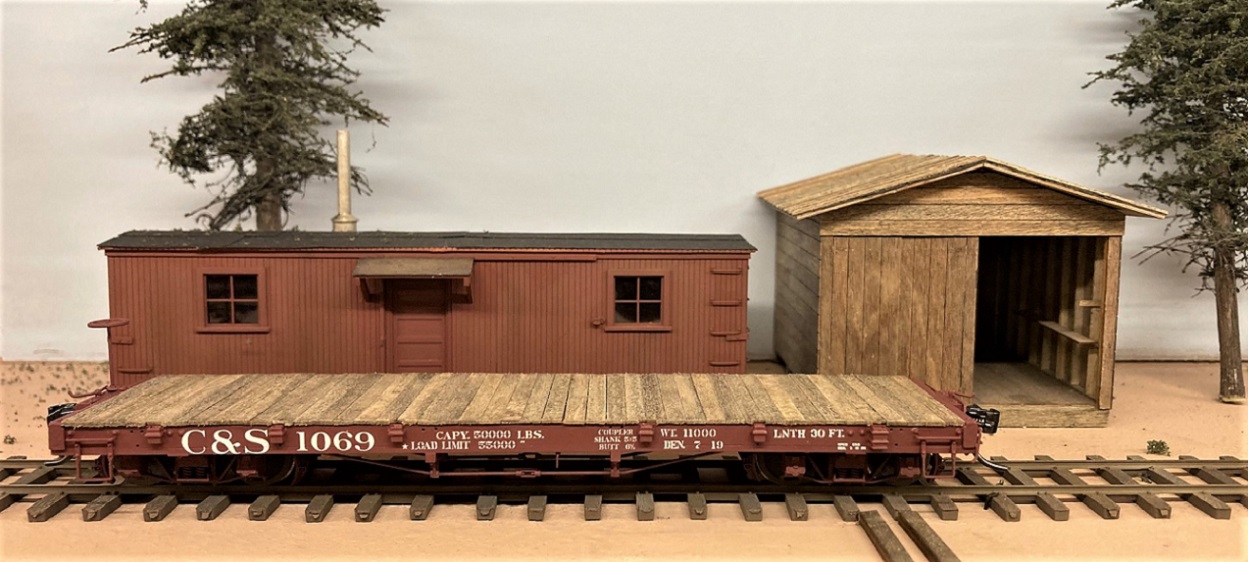 I've been following Keith's very excellent flatcar adventure with great interest. It has inspired me to build a C&S flatcar for my 1924 freight roster. While Keith scratch built one of the 1902 flatcars, C&S 1078-1097, I opted to kit-bash a car from the other class of "modern" C&S flatcars, the "St Charles" flatcars, numbered 1063-1077. Yep, you are correct--St Charles never built any flat cars for the C&S. The "St Charles" flatcars have their own odd story . . . History: December 31, 1916, was the drop dead date for railroad compliance with the US Safety Appliances Act, as amended by Congress in 1911. It is not surprising that most of the remaining inherited freight cars were removed from revenue service about then. These were the 30-foot, forty-ton Peninsular boxcars, coal cars and flatcars, built in 1884 for the DSP&P while under UP ownership. The Peninsular flat cars had been re-numbered to 1060-1077 on the new C&S. This left the 17 survivors of the original 20 flatcars built in 1902, plus C&S 1050 (a new build in 1902, possibly from a Peninsular coal car) to serve the company's flat car needs after 1916. In 1919, the C&S decided that 18 narrow gauge flat cars were not enough for traffic needs. So, they converted 15 of the older St Charles 3-board and 4-board coal cars of 1897-1898 into new flat cars. The only coal car number known to be converted was 4207. These flat car conversions were numbered as C&S second 1063-1077, using numbers vacated by the scrapped Peninsular flat cars--the C&S liked to number freight cars of any given car type sequentially, by date of original build. There was a long history of flat car-to-coal car and coal car-to-flat car conversions on the South Park, particularly during the years of UP ownership. It really was not much of a big deal. Consider this beautiful photo that Doug Heitkamp posted several years ago: 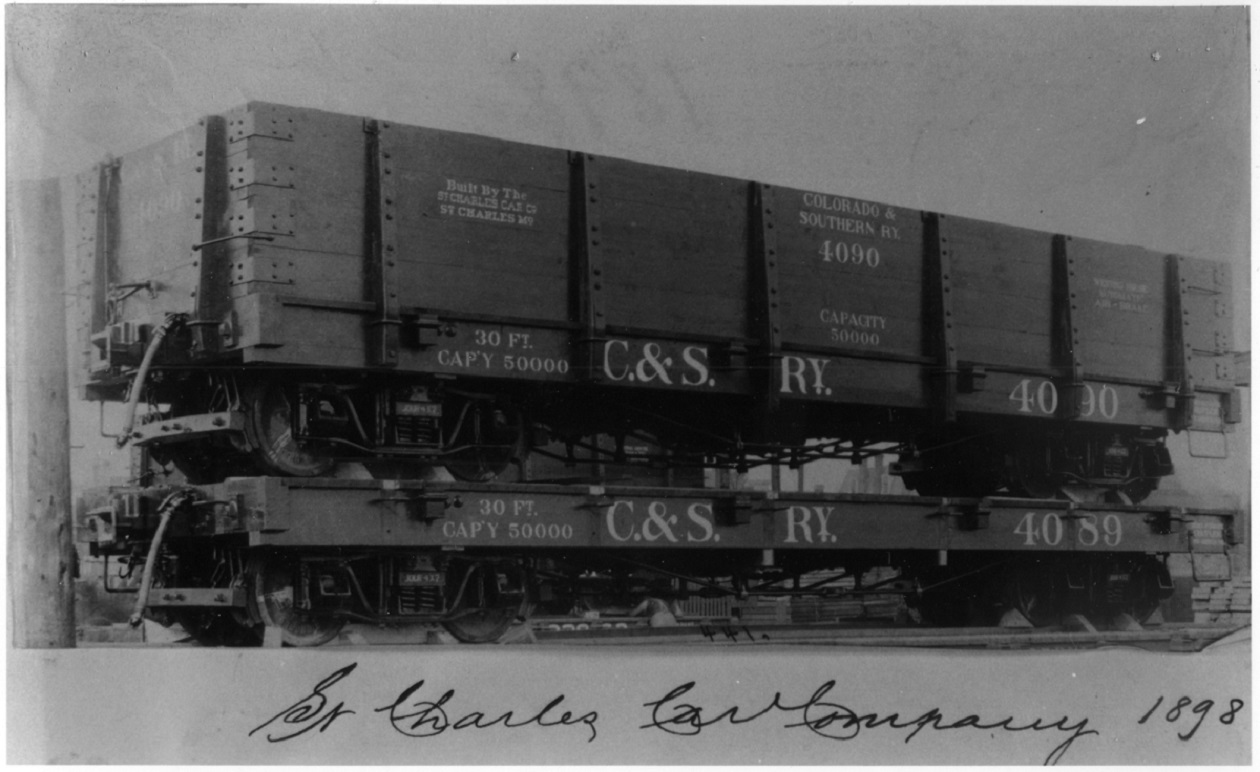 Brand new St Charles coal cars 4089 and 4090 are leaving St Charles, MO for Colorado. To save on shipping costs, 4090 is stacked on top of the floor/frame of 4089. The components for the coal box on 4089 are presumably loaded on another car. C&S 4090 is complete, ready for service on arrival, while the UPD&G shops at either Denver or Trinidad will have to reassemble the coal box of 4089. In model railroad parlance, C&S 4090 is "ready-to-run", while C&S 4089 is a "semi-kit". The 1919 flat car conversions were just the same process in reverse. In the 1919 conversion to flat cars, once the coal box and side stakes had been removed, the original 4 auxiliary stake pockets on each side sill were retained and matching (sometimes not) stake pockets were attached to the side sill where the 2nd and 5th side stakes had been located. This gave the St Charles flat cars an odd look with two groups of three stake pockets, separated by a gap, on each of the side sills. The only good photo of a St Charles flat car that I have is this one of C&S 1069 with a load of bridge timbers, in August. 1938: 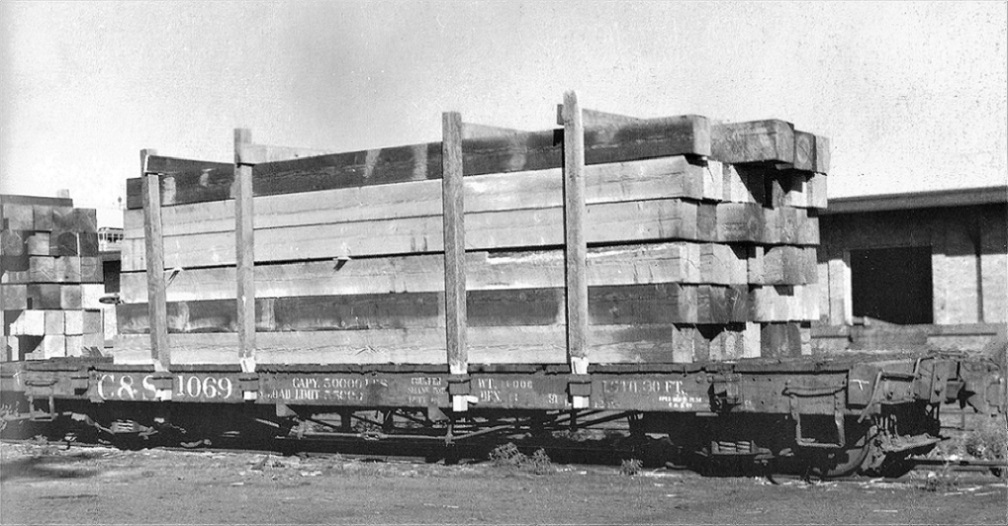 Note the visible holes in the side sill where the lower stake bolt and U-bolts had been removed. Also note the gnarly mismatched stake pocket on the right. There is another photo of a St Charles flat car. When CONX tank car number 5 was wrecked on the Alma branch in 1930, its original wood underframe was pretty much destroyed beyond repair. 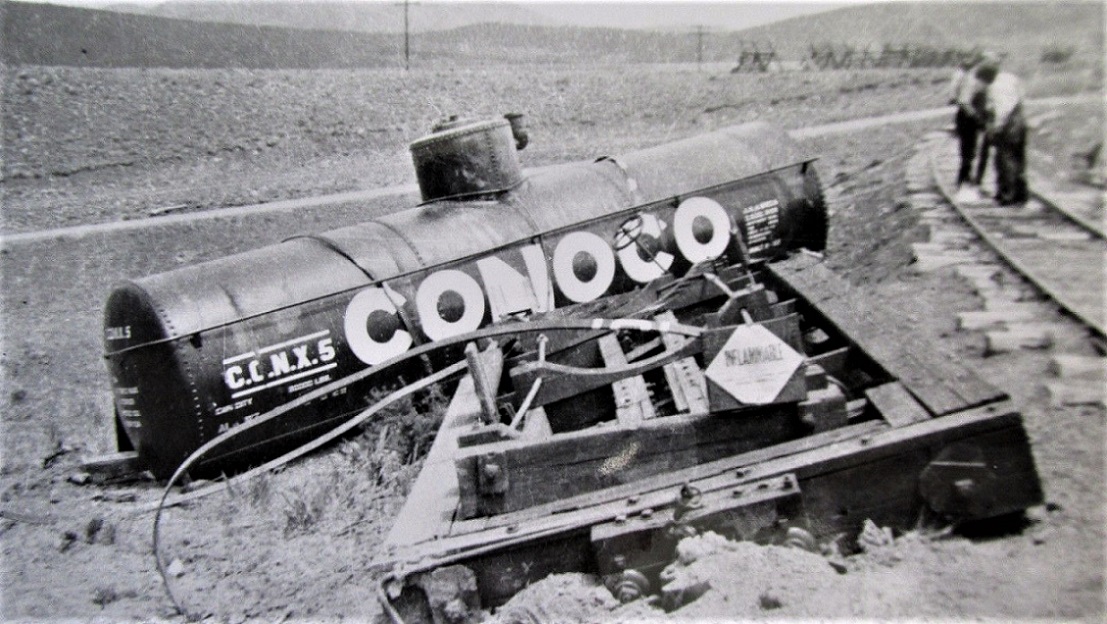 The C&S shops in Denver rebuilt CONX 5, using one of the St. Charles flat cars (number unknown) as a new floored underframe: 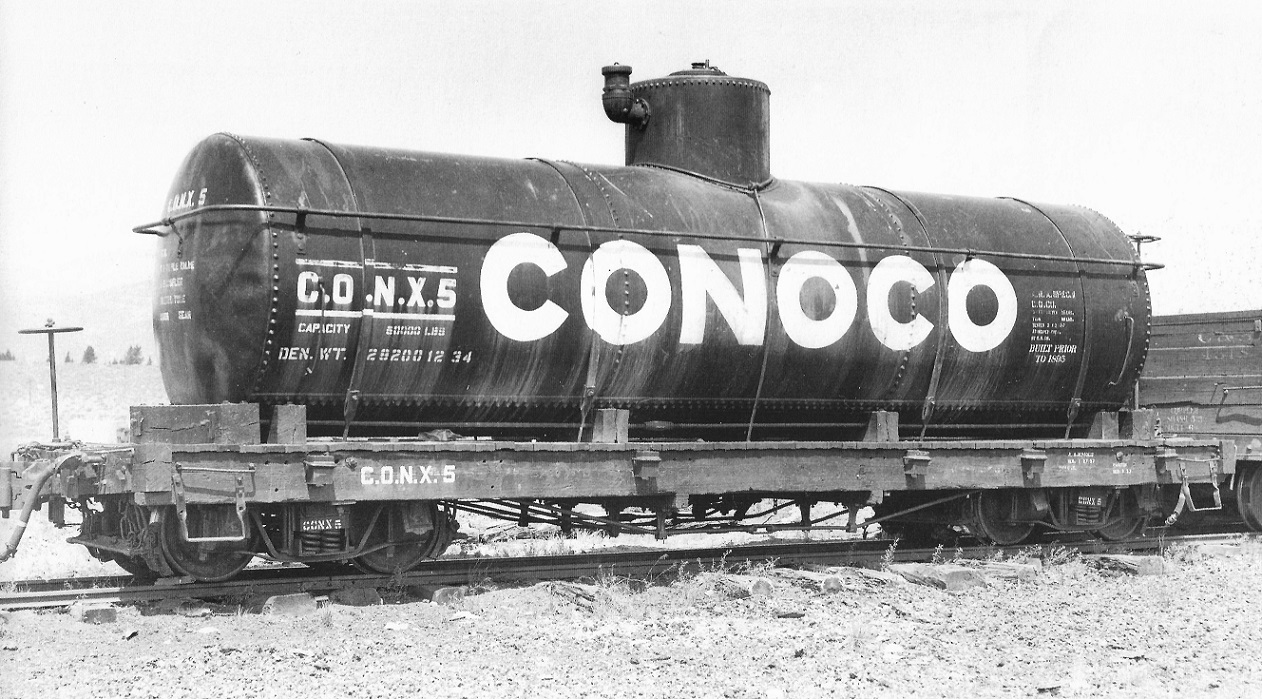 Again note the visible stake bolt holes from the days of being a coal car. Looks like some of the stake pockets have been removed, no longer needed on a tank car. Flat car numbers on the C&S fell from a total of 32 cars in 1920 to only 9 by 1934--four St. Charles flat cars and five of the 1902 phase 1 flatcars. The Model: I'm kit-bashing five of the St. Charles 4-board coal cars from the Berlyn (now P.V.C.) phase 2 coal car kit in Sn3. I like the built-in flat steel weight and the molded coupler pocket in the underframe. Currently I have one coal car nearly ready for paint and four built up underframes, including brake gear. For my basic St. Charles underframe conversion see: http://c-sng-discussion-forum.254.s1.nabble.com/Phase-I-1902-C-amp-S-Coals-td5260.html Following the prototype, I diverted one of the coal car underframes for use as a flat car. The most tedious part of my conversion was laying out and drilling all the various empty bolt holes on the side sills. I admired Doug Heitkamp's large scale model of the C&S cinder car, with all the visible bolt holes, and wanted to include this detail. Anyhow, here is the car prior to paint:  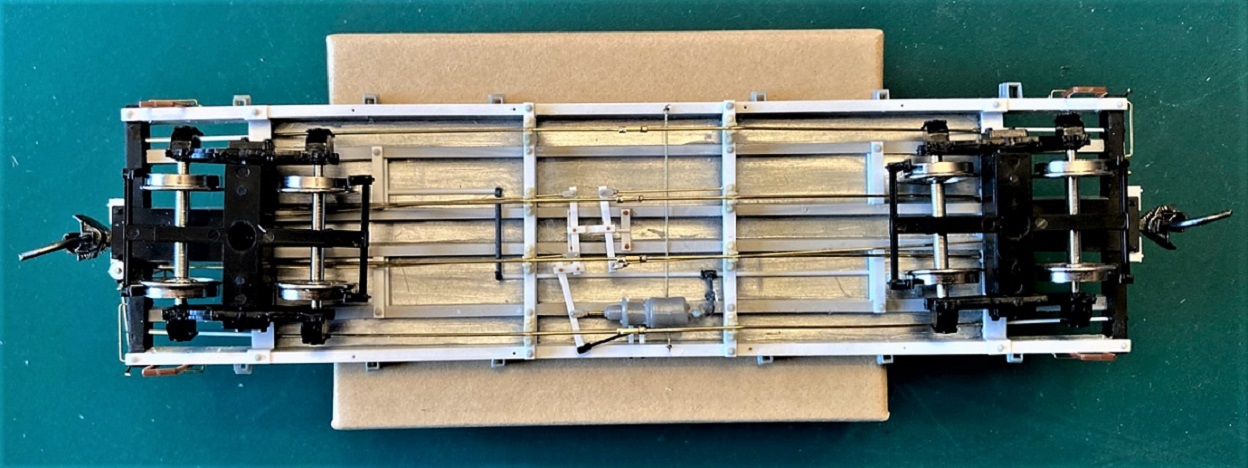 The St. Charles flats used the rigid and trussed 4' wheel base arch bar trucks, while Keith's flat uses the ASF 4' wheelbase arch bar truck. Painting and Lettering: According to Derrell Poole, the first types of C&S freight cars to receive the "modern" railroad Roman reporting marks were the cabooses and the flat cars, beginning about 1920. I think is is unlikely that the St. Charles rebuilt flats every carried the Gothic lettering for reporting marks. so I lettered the car like Keith's, pieced together from a San Juan coal car decal set, I just used 1919 weigh dates. I was intrigued by Keith's method of fabricating ship-lap flooring and considered trying it -- for about two minutes. Just one more thing to cause the car to never be finished. Poole's plans for the flooring on the St Chas coal cars indicates 1 3/4" x 7" planking. I found that HO scale 2x10 strip wood was very close. I stained 10 strips with black and brown leather dye in alcohols, each strip a bit different, then cut them to length, and randomly threw them into a pile. To attach them to the painted plastic deck and metal weight, I used a new product for me, ALTECO SW100 supper glue. It is a medium viscosity, slow drying ACC designed for leather, wood and other porous materials. We'll see if the planks stay put over time. 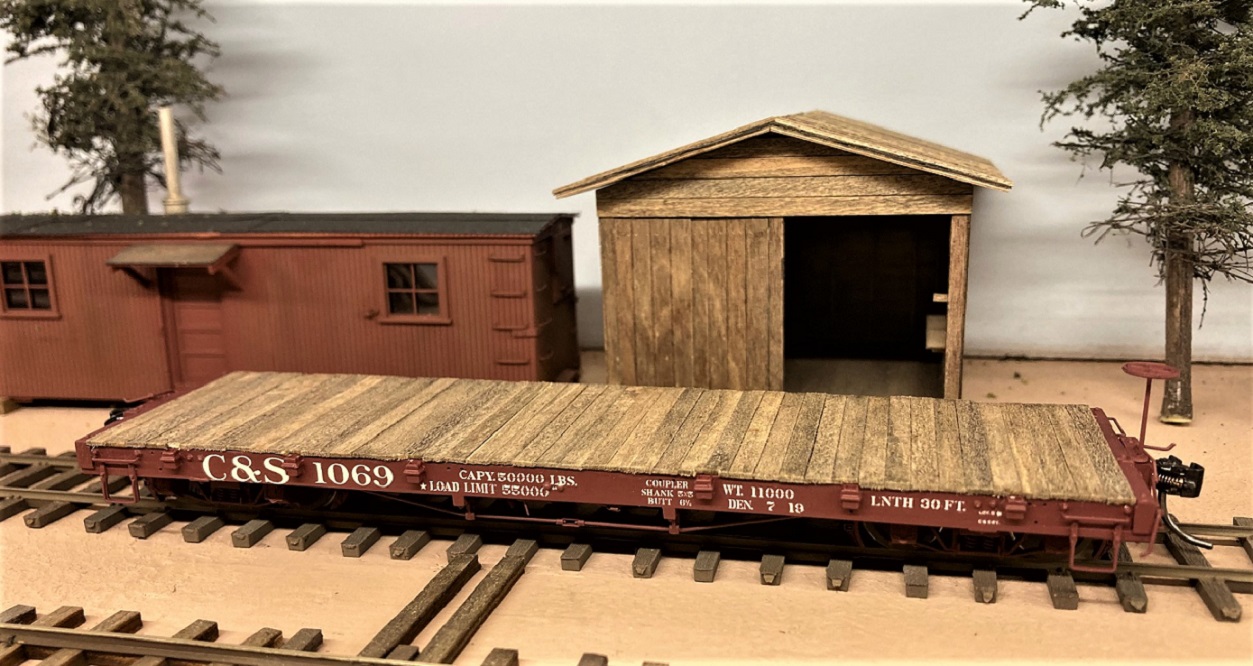 Finally, a challenge to Chris Walker. Derrell Poole says that a photo of flat car 1077 exists. Can you find it or any other photo of C&S flat cars 1063-1077 dated after 1920??? 
Jim Courtney
Poulsbo, WA |
Re: "St. Charles" Flatcar in C&Sn3
|
Excellent work, Jim.
I used the photo of 1069 in the NGP as the basis of my lettering for 1095. I wondered why I could not get the coupler shank stencil on. I now realize I was following Derrel's drawings for the coal, and not looking at the photos of the flat. Coals, and D&RGW gons, place the posts over the needle beams. The flat car post brackets are wide of the needle beams as the car heritage was as a coal. D'oh!  I think of these as little buildings and the house cars are effectively little trusses. It is typical for a vertical post or bearing to occur directly above the bolster, and another directly above the needle beam. So, when laying out windows for MOW cars converted from house cars, these are two working points to use to align the windows.
Keith Hayes
Leadville in Sn3 |
«
Return to C&Sng Discussion Forum
|
1 view|%1 views
| Free forum by Nabble | Edit this page |

